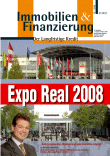Sie befinden sich hier: Home › Immobilien & Finanzierung › Ergänzende Informationen › Archivdaten › Real Estate Financing and Market - Singapore
Archivdaten
01.10.2008
Messeausgabe 2008
Real Estate Financing and Market - Singapore

Dieser Artikel ist Teil unseres Online-Abo Angebots.
Immobilien & Finanzierung, Ausgabe vom 01.10.2008, Seite 734
Archivdaten
2,60 €
1368